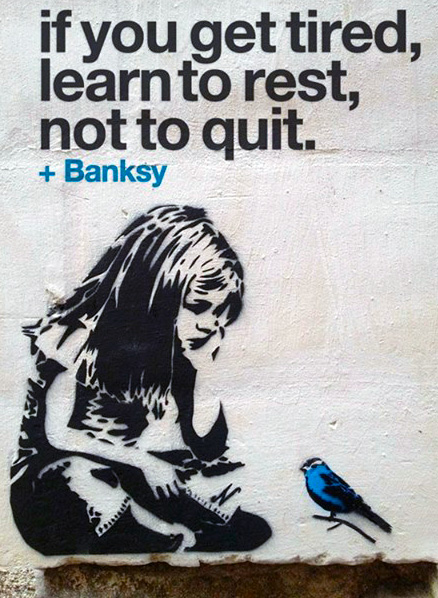The idea of data driven learning has become very popular. This isn’t surprising since data is beginning to drive everything. It becomes problematic when data is manipulated for ulterior, usually political motives rather than being understood in its own context.
It’s a complex series of events that have led us to this point. We’re living in an age of data where we are recording much of it for the first time. We mistakenly describe this as ‘creating information’, but we’ve always done that. What digitization does is allow us to save that data on a massive scale and then make connections in it we couldn’t before.
| We’re not creating any more information than we used to, but we are recording it now at an unprecedented rate. |
We’ve been experiencing this information forever. If I went for a ride on my motorbike in the 1950s I would have experienced roughly the same ‘data’ that I’d experience going for a ride now. The difference now is that the go-pro on my helmet and youtube means that data is saved and shared. We’re not creating any more information than we did before, but we’re recording it and allowing others to experience data now on an unprecedented scale.
This mass recording and access to data is a relatively new phenomenon so we should take care to contextualize it, but we don’t. We recognize that data driven methods yield results, but in our rush to enter this brave new world of data we happily ignore what doesn’t suit our goals and take other data out of context if it serves our cause. When politics or self-promotion drive data selection the benefits of data driven management are in doubt. Politics and self-promotion always influence data collection and presentation.
 Since it is so much easier to record and share data we’re tempted to structure our activities around data creation rather than being present in the genuine experience. I suspect we’ll get better at this as technology becomes less invasive and allows us to capture moments with minimal interference. The evolution from TV to analogue video to digital video is a good example of this progress. But in the early stages of this evolution we’re still awkwardly focusing on data collection rather than genuine experience. Selfies at the Tour de France this year are an example. If you watch any live event where people are focused on recording rather than experiencing the moment you’ll know this is endemic. From the World Cup to the Olympics, the focus on data collection gets in the way of being there. This creates some interesting changes in experiential value. You now need to share the experience live rather than relating it after the fact. Being there is less important than your recording of being there. Every experience is one step removed.
Since it is so much easier to record and share data we’re tempted to structure our activities around data creation rather than being present in the genuine experience. I suspect we’ll get better at this as technology becomes less invasive and allows us to capture moments with minimal interference. The evolution from TV to analogue video to digital video is a good example of this progress. But in the early stages of this evolution we’re still awkwardly focusing on data collection rather than genuine experience. Selfies at the Tour de France this year are an example. If you watch any live event where people are focused on recording rather than experiencing the moment you’ll know this is endemic. From the World Cup to the Olympics, the focus on data collection gets in the way of being there. This creates some interesting changes in experiential value. You now need to share the experience live rather than relating it after the fact. Being there is less important than your recording of being there. Every experience is one step removed.
Education is no different. Rather than focusing on ways to capture genuine experience in as non-invasive a way as possible, we create artificial situations that produce data for its own sake; standardized testing is a fine example. Rather than integrating literacy assessment into genuine experience driven learning, we create an artificial testing environment that is designed to produce data. Students and the complexities of literacy are minor components in that process. We then base management decisions on the corrupted data that is produced from these artificial situations.
If data collection is the point of the exercise then the data you’re producing is a reflection of the data collection process more than it is a meaningful analysis of whatever it is you think you’re assessing.
Technology needs to be pushed to produce non-invasive ways of collecting genuine data. Not only will this allow people to bask in the moment rather than ignoring first hand experience to create second rate data, but it will also serve student learning by focusing on the learning itself instead of the data gathering processes.
We need to stop bending the people to the data and start demanding that the data find us where we are, in genuine experience. In the meantime it is vital that we don’t blindly believe that there are absolute truths in data that is produced for its own sake with ulterior motives.

















.jpg)


